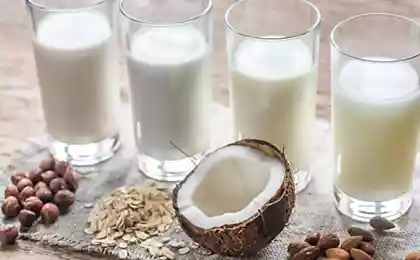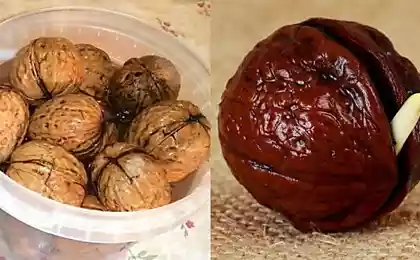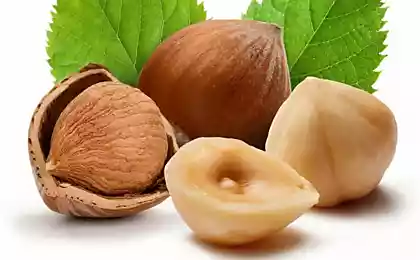737
Gingko biloba — nuts for Your longevity

Ginkgo biloba — relict tree that was a witness to the era of the dinosaurs. In the East (China, Korea and Japan) is a tree, decorated the parks of the Chinese emperors, it is planted near temples and monasteries. The monks knew that gingko biloba is the tree of longevity, therefore, considered it sacred. They long kept the knowledge about this wonderful tree from strangers. And it was not until the SEVENTEENTH century. In 1690 a Dutch physician Kaempfer snuck a few kernels — walnuts, gingko biloba to Europe, unaware of its wonderful properties and use. Therefore, in Europe, gingko biloba for a long time, just was adorned with gardens and parks. Only recently its medicinal properties were used in medicine. From the fruit and leaves of this wonderful tree makes tablets, solutions, gels, capsules. In cosmetics its anti-aging effect used for the regeneration of skin cells, vascular venous network, smoothing of wrinkles, for hair care and to treat cellulite. Finally, after passing through human ignorance and forgetfulness, Ginkgo biloba has held a place of honor among the plants-healers.
The gingko tree is the model of stability and endurance. It is inaccessible to pests, viruses, fungi and insects, thrives in any soil and in any climate. The Japanese regard the gingko biloba a symbol of endurance and longevity. Goethe mentioned this tree in his poems, so in Germany, too, revered gingko biloba, calling it "the tree of Goethe."

From Japanese gingko means "silver apricot" or "silver nut". Round amber fruit, shimmering with silver, very much like small apricots. When it comes to late autumn and the first frost silvers the ground, starts the harvest of gingko biloba. Nuts (kernels) are separated from the pulp. Before using in cooking and for medicinal purposes them washed, dried and freed from the shell. These white hearts, stewed, and cooked with meat, vegetables, fish, mushrooms, in soups and teas. They can be eaten like regular nuts just cleaned or roasted. Food with the addition of cores gingko is very useful, especially for those over 40. But this does not mean that gingko biloba is a product for the elderly or the sick. It is also useful for those people who are engaged in strenuous physical or mental work.
Nuts (kernel) gingko biloba is rich in antioxidants, organic acids, amino acids, steroids, essential oils, alkaloids, various vitamins, and micro and macro.
The unique biochemical composition of nutrients Ginkgo has a beneficial effect on the body:
• Accelerates cell renewal, prevents the formation of blood clots;
• Makes blood vessels more elastic, thus preserving mental clarity and memory;
• Slows the development of hypertension and Alzheimer's disease;
• Increases the consumption of brain cells of oxygen and glucose;
• Reduces blood viscosity, improves blood flow in the heart, brain and extremities;
• It has a decongestant, antihistamine and diuretic action;
• Reduces fragility of blood vessels, preventing stroke and heart attack;
• Regulates the metabolism of carbohydrates, increasing the production of insulin;
• Inhibits the development of metastases in malignant tumors;
• Lowers cholesterol and uric acid, toxins from the body;
• Helps to maintain hearing and vision;
• Improves potency, relieves premenstrual syndrome;
• Helps in bronchial asthma, insomnia, depression, hemorrhoids;
• Accelerates the healing of various traumatic brain injuries.
Ginkgo biloba is contraindicated in cases of bleeding, at risk of developing intracranial hemorrhage, in acute disorders of intracranial pressure, hypotension, arterial hypotension, acute myocardial infarction. Ginkgo biloba also can not be used during pregnancy and breast-feeding, before, children under 18 years of age.
Gingko biloba as a dietary Supplement, and to prevent start with low dose, over time it increasing. It is recommended to take during meals with a large glass of water. Maximum dose should calculate the attending physician depending on the purpose of admission and your condition. Avoid overdoses to eliminate the risk of development of hemophilia (excessive blood thinning). Before use, be sure to consult with a specialist. Self-medication can be dangerous to your health.
Recipes with nuts gingko biloba
Rice soup with tomatoes and nuclei gingko biloba
Pour in a pan 6 cups of water add 1/3 Cup of rice, a tablespoon of melted butter, salt (to taste). Stir and bring to a boil. Clean 500 g tomatoes without skin, cut into cubes. When the rice is soft, put to it chopped tomatoes and cook for another 5 minutes. Ready soup remove from heat. Let stand 10 minutes. Then pour on plates, sprinkle with chopped greens and ground, pre-roasted, kernels gingko biloba.
Shrimp with herbs and kernels gingko biloba
20 pieces of uncooked shrimp — 10 nuts, gingko biloba, vegetable oil for frying, flour, egg whites.
Clean the nuts, gingko biloba, cut them into pieces. Shrimp clear from the shell and "vein", leave the tails. Heat in a pan with oil. Roll the prawns first in flour, then in egg whites and then in nuts. Quickly saute shrimp in tempura (deep frying), salt, sprinkle with greens.
Bon appetit!
Source: www.nadsoznaniem.ru/gingko-biloba-orehi-dlya-dolgoletiya/
A simple method of self-discovery - practical exercise
Cree has released a new cost effective LED light bulbs






















